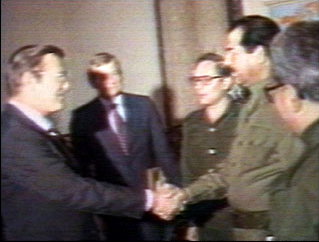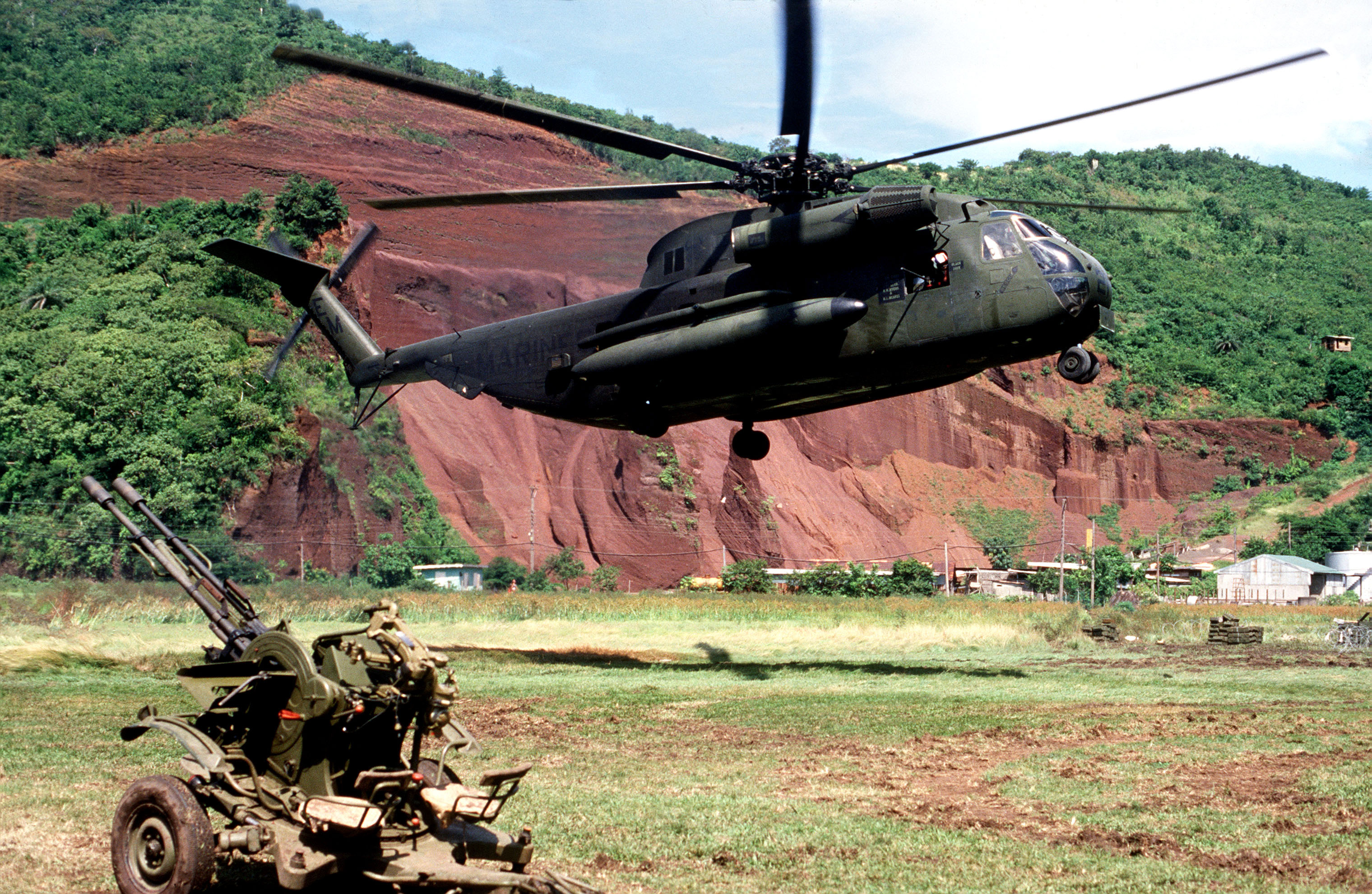|
75th Ranger Regiment
The 75th Ranger Regiment, also known as the United States Army Rangers, Army Rangers, is the United States Army Special Operations Command's premier light infantry and direct-action raid force. The 75th Ranger Regiment is also part of Joint Special Operations Command via the Regimental Reconnaissance Company (RRC). The U.S. Army Regimental System, regiment is headquartered at Fort Benning, Georgia (U.S. state), Georgia, and comprises a regimental headquarters company, a Regimental Military Intelligence Battalion, military intelligence battalion, a Special Troops Battalion, special troops battalion, and three Ranger battalions. The 75th Ranger Regiment primarily handles direct-action raids in hostile or sensitive environments, often killing or capturing high-value targets. Other missions include airfield seizure, special reconnaissance, personnel recovery, clandestine insertion, and site exploitation. The regiment can deploy one Ranger battalion within 18 hours of alert notific ... [...More Info...] [...Related Items...] OR: [Wikipedia] [Google] [Baidu] |
Distinctive Unit Insignia
A distinctive unit insignia (DUI) is a metallic Heraldry, heraldic badge or device worn by soldiers in the United States Army. The DUI design is derived from the coat of arms authorized for a unit. DUIs may also be called "distinctive insignia" (DI) or, imprecisely, a "Crest (heraldry), crest" or a "unit crest" by soldiers or collectors. The United States Army Institute of Heraldry, U.S. Army Institute of Heraldry is responsible for the design, development and authorization of all DUIs. History Pre-World War I Insignia Distinctive ornamentation of a design desired by the organization was authorized for wear on the mess dress, Mess Jacket uniform by designated organizations (staff corps, departments, corps of artillery, and infantry and cavalry regiments) per War Department General Order 132 dated December 31, 1902. The distinctive ornamentation was described later as coats of arms, pins and devices. The authority continued until omitted in the Army uniform regulation dated Decemb ... [...More Info...] [...Related Items...] OR: [Wikipedia] [Google] [Baidu] |
Persian Gulf War
, combatant2 = , commander1 = , commander2 = , strength1 = Over 950,000 soldiers3,113 tanks1,800 aircraft2,200 artillery systems , page = https://www.govinfo.gov/content/pkg/GAOREPORTS-PEMD-96-10/pdf/GAOREPORTS-PEMD-96-10.pdf , strength2 = 1,000,000+ soldiers (~600,000 in Kuwait)5,500 tanks700+ aircraft3,000 artillery systems , casualties1 = Total:13,488 Coalition:292 killed (147 killed by enemy action, 145 non-hostile deaths)776 wounded (467 wounded in action)31 tanks destroyed/disabled28 Bradley IFVs destroyed/damaged1 M113 APC destroyed2 British Warrior APCs destroyed1 artillery piece destroyed75 aircraft destroyedKuwait:420 killed 12,000 captured ≈200 tanks destroyed/captured 850+ other armored vehicles destroyed/captured 57 aircraft lost 8 aircraft captured (Mirage F1s) 17 ships sunk, 6 captured. Acig.org. Retrieved on 12 June 2011 , casualties2 = Total:175,000–300,000+ Iraqi:20,000–50,000 killed ... [...More Info...] [...Related Items...] OR: [Wikipedia] [Google] [Baidu] |
Invasion Of Panama
The United States invaded Panama in mid-December 1989 during the presidency of George H. W. Bush. The purpose of the invasion was to depose the '' de facto'' ruler of Panama, General Manuel Noriega, who was wanted by U.S. authorities for racketeering and drug trafficking. The operation, codenamed Operation Just Cause, concluded in late January 1990 with the surrender of Noriega. The Panama Defense Forces (PDF) were dissolved, and President-elect Guillermo Endara was sworn into office. Noriega, who had longstanding ties to United States intelligence agencies, consolidated power to become Panama's ''de facto'' dictator in the early 1980s. In the mid-1980s, relations between Noriega and the U.S. began to deteriorate due to fallout of the murder of Hugo Spadafora and the removal from office of President Nicolas Ardito Barletta. His criminal activities and association with other spy agencies came to light, and in 1988 he was indicted by federal grand juries on several drug-relat ... [...More Info...] [...Related Items...] OR: [Wikipedia] [Google] [Baidu] |
Invasion Of Grenada
The United States and a Caribbean Peace Force, coalition of Caribbean countries invaded the small island nation of Grenada, north of Venezuela, at dawn on 25 October 1983. Codenamed Operation Urgent Fury by the U.S. military, it resulted in military occupation within a few days. It was triggered by strife within the People's Revolutionary Government (Grenada), People's Revolutionary Government, which led to the house arrest and execution of the previous leader and second List of heads of government of Grenada, Prime Minister of Grenada, Maurice Bishop, and to the establishment of the Revolutionary Military Council, with Hudson Austin as chairman. Following the invasion there was an interim government appointed, and then 1984 Grenadian general election, general elections held in December 1984. The invading force consisted of the 1st and 2nd battalions of the US Army, U.S. Army's 75th Ranger Regiment, the 82nd Airborne Division, and elements of the former Rapid Deployment Joint ... [...More Info...] [...Related Items...] OR: [Wikipedia] [Google] [Baidu] |
Vietnam War
The Vietnam War (1 November 1955 – 30 April 1975) was an armed conflict in Vietnam, Laos, and Cambodia fought between North Vietnam (Democratic Republic of Vietnam) and South Vietnam (Republic of Vietnam) and their allies. North Vietnam was supported by the Soviet Union and China, while South Vietnam was supported by the United States and other anti-communist nations. The conflict was the second of the Indochina wars and a proxy war of the Cold War between the Soviet Union and US. The Vietnam War was one of the postcolonial wars of national liberation, a theater in the Cold War, and a civil war, with civil warfare a defining feature from the outset. Direct United States in the Vietnam War, US military involvement escalated from 1965 until its withdrawal in 1973. The fighting spilled into the Laotian Civil War, Laotian and Cambodian Civil Wars, which ended with all three countries becoming Communism, communist in 1975. After the defeat of the French Union in the First Indoc ... [...More Info...] [...Related Items...] OR: [Wikipedia] [Google] [Baidu] |
Korean War
The Korean War (25 June 1950 – 27 July 1953) was an armed conflict on the Korean Peninsula fought between North Korea (Democratic People's Republic of Korea; DPRK) and South Korea (Republic of Korea; ROK) and their allies. North Korea was supported by China and the Soviet Union, while South Korea was supported by the United Nations Command (UNC) led by the United States. The conflict was one of the first major proxy wars of the Cold War. Fighting ended in 1953 with an armistice but no peace treaty, leading to the ongoing Korean conflict. After the end of World War II in 1945, Korea, which had been a Korea under Japanese rule, Japanese colony for 35 years, was Division of Korea, divided by the Soviet Union and the United States into two occupation zones at the 38th parallel north, 38th parallel, with plans for a future independent state. Due to political disagreements and influence from their backers, the zones formed their governments in 1948. North Korea was led by Kim Il S ... [...More Info...] [...Related Items...] OR: [Wikipedia] [Google] [Baidu] |
Cold War
The Cold War was a period of global Geopolitics, geopolitical rivalry between the United States (US) and the Soviet Union (USSR) and their respective allies, the capitalist Western Bloc and communist Eastern Bloc, which lasted from 1947 until the dissolution of the Soviet Union in 1991. The term ''Cold war (term), cold war'' is used because there was no direct fighting between the two superpowers, though each supported opposing sides in regional conflicts known as proxy wars. In addition to the struggle for ideological and economic influence and an arms race in both conventional and Nuclear arms race, nuclear weapons, the Cold War was expressed through technological rivalries such as the Space Race, espionage, propaganda campaigns, Economic sanctions, embargoes, and sports diplomacy. After the end of World War II in 1945, during which the US and USSR had been allies, the USSR installed satellite state, satellite governments in its occupied territories in Eastern Europe and N ... [...More Info...] [...Related Items...] OR: [Wikipedia] [Google] [Baidu] |
Burma Campaign
The Burma campaign was a series of battles fought in the British colony of British rule in Burma, Burma as part of the South-East Asian theatre of World War II. It primarily involved forces of the Allies of World War II, Allies (mainly from the British Empire and the Republic of China (1912–49), Republic of China, with support from the United States) against the invading forces of the Empire of Japan. Imperial Japan was supported by the Thailand in World War II, Thai Phayap Army, as well as two Collaboration with Imperial Japan, collaborationist independence movements and armies. Nominally independent puppet states were established in the conquered areas and some Saharat Thai Doem, territories were annexed by Thailand. In 1942 and 1943, the international Allied force in British Raj, British India launched Burma campaign (1942–1943), several failed offensives to retake lost territories. Burma campaign 1944, Fighting intensified in 1944, and British Empire forces peaked at a ... [...More Info...] [...Related Items...] OR: [Wikipedia] [Google] [Baidu] |
Philippines Campaign (1944–1945)
Philippines campaign may refer to various military campaigns that have been fought in the Philippine Islands, including: Spanish colonial period (1565–1898) *Numerous revolts against Spain during the Spanish colonial period; see Philippine revolts against Spain and Military history of the Philippines#Spanish colonial period (1565–1898) *Various actions fought in the Philippines during the Eighty Years' War between Spain and the Netherlands; see "Eighty Years War (1568–1648)" at Military history of the Philippines#Spanish colonial period (1565–1898) *The Limahong Campaign (1573–1575), an attempt by the Chinese pirate Limahong to seize northern Luzon from Spanish authorities *Various actions fought in the Philippines during the Seven Years War (1756–1763) between European powers; see Military history of the Philippines#Spanish colonial period (1565–1898) and Seven Years' War#Other Continents *The Philippine Revolution (1896–1898), called the "Tagalog Revolt" by t ... [...More Info...] [...Related Items...] OR: [Wikipedia] [Google] [Baidu] |
Battle Of Hürtgen Forest
The Battle of Hürtgen Forest () was a series of battles fought from 19 September to 16 December 1944, between United States Armed Forces, American and Wehrmacht, German forces on the Western Front (World War II), Western Front during World War II, in the Hürtgen Forest, a area about east of the Belgian–German border. Lasting 88 days, it was the longest battle on German ground during World War II and it is the second longest single battle the U.S. Army has ever fought after the four-day-longer Battle of Bataan. The U.S. commanders' initial goal was to pin down German forces in the area to keep them from reinforcing the front lines farther north in the Battle of Aachen, where the US forces were fighting against the Siegfried Line network of fortified industrial towns and villages speckled with Pillbox (military), pillboxes, tank traps, and minefields. The Americans' initial tactical objectives were to take the village of Schmidt and clear Monschau. In a second phase the Allie ... [...More Info...] [...Related Items...] OR: [Wikipedia] [Google] [Baidu] |







